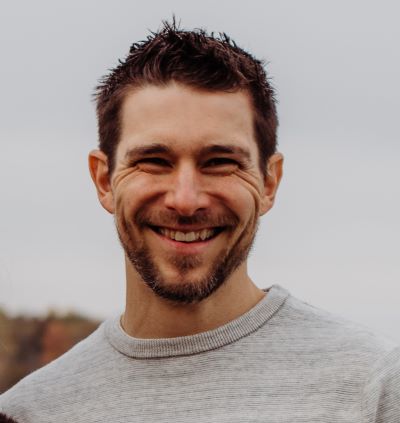
- This event has passed.
5/11/17: Bopi Biddanda

Please join us for a Great Lakes Seminar Series presentation:
Time: 1:00-2:00 pm EDT
Location: NOAA Great Lakes Environmental Research Laboratory, Lake Superior Hall
Presenter: Dr. Bopi Biddanda, Grand Valley State University, Annis Water Resources Institute
Title: Finding and Tracking the “Goldilocks Zone” for Carbon Cycling in a Great Lakes Watershed
Webinar Recording: https://www.youtube.com/watch?v=jg1CE992530&index=12&list=PL9U_EaC5J7PxAV2x50vllTghRt-2c7PcR
Abstract: For more than a decade, we have monitored the Muskegon Lake estuary, a model drowned river mouth system that is an Area of Concern with connectivity to the 2nd largest watershed in Michigan and Lake Michigan. Measured rates of carbon metabolism from upstream Muskegon River to offshore Lake Michigan show prevalence of high rates of gross production (GP), respiration (R), and net production (NP) in Muskegon Lake that decrease steeply along an offshore transect in Lake Michigan. Over the annual cycle, Muskegon Lake is net autotrophic suggesting that estuary/near-shore waters are net carbon sinks. Autotrophy was maximized in the coastal/estuary zone where longer residence times coincide with nutrient loading from the watershed. Indeed, the overall net autotrophic production in this coastal “Goldilocks Zone” may explain the highly productive resident and migratory fisheries of this Great Lakes estuary.
Since spring 2011, using advanced observing technology we have also been gathering high-resolution time-series data from meteorological and multi-depth water sensors through the Muskegon Lake buoy Observatory (MLO; www.gvsu.edu/buoy). MLO has revealed the intimate inner workings of Muskegon Lake such as how the estuary operates on a daily, monthly, seasonal, and yearly basis. For example, MLO has informed us about the annually recurring summer bottom water hypoxia and emergence of harmful cyanobacterial blooms (HABs) exposing daily and weekly oscillations in the severity of each. With additional moorings and sensor strings deployed lake-wide during 2015-16, we now have evidence that substantial but episodic intrusion of upwelled cold and high-dissolved oxygen water from nearshore Lake Michigan into the bottom waters of the estuary during the summer-stratified period may reduce the severity of both bottom water hypoxia and surface water HABs in this estuary. Open-access time-series data from the MLO is advancing science, and science-based education, outreach and restoration activities. However, continued operation of this sentinel regional infrastructure past the current year is in jeopardy due to severe funding scarcity.
Bio: Dr. Bopaiah (Bopi) Biddanda is an aquatic microbial ecologist/carbon biogeochemist studying the movement of carbon driven by microbes in freshwater ecosystems. He has a Ph.D. in Ecology from the University of Georgia where he explored new mechanisms of carbon flux mediated by microbes in the sea. Subsequently, he went on research and teaching adventures at the Alfred Wegener Institute for Polar and Marine Research (Germany), University of Texas Marine Science Institute, University of Rio Grande (Brazil) and University of Minnesota. Currently, as a professor of water resources at GVSU, he studies the microbial biogeochemistry of the Laurentian Great Lakes – including life in extreme environments, teaches classes in Marine Biology and Biogeochemistry, operates a world-class time-series buoy observatory in Muskegon Lake AOC, serves as a fellow of the Cooperative Institute for Limnology and Ecosystems Research, and coordinates NASA’s Michigan Space Grant Consortium programs for GVSU. Bopi is a recipient of the 2009 Chandler-Misener Award by the International Association for Great Lakes Research. He just returned from a sabbatical studying the response of oligotrophic high-mountain glacial lakes of Sierra Nevada (Spain) to increasing ultraviolet exposure and Saharan dust deposition. For the foreseeable future, he hopes to study Earth’s lakes as sentinels of both local and global change, focusing on the changing carbon cycle in one of our most vital societal commons: freshwater.
Important Visitor Information
All in-person seminar attendees are required to receive a visitor badge from the front desk at the NOAA Great Lakes Environmental Research Laboratory facility. Seminar attendees need to present a valid U.S. photo ID or green card. If you are a Foreign National, advance notification of at least 48 hours is needed so that security guidelines are followed. You will need to present your passport (a copy will NOT work). For questions regarding building access, or assistance in obtaining Foreign National clearance, please call 734-741-2393. Email contact: [email protected]
TRAFFIC NOTICE: South State Road is currently under construction and is closed to through traffic between Ellsworth and Morgan, where GLERL is located. Access to GLERL is from the south (i.e., via Textile Road to S. State Rd.). Please allow extra time for this detour.
_____________________________________________________
Questions? Contact Mary Ogdahl: [email protected]

